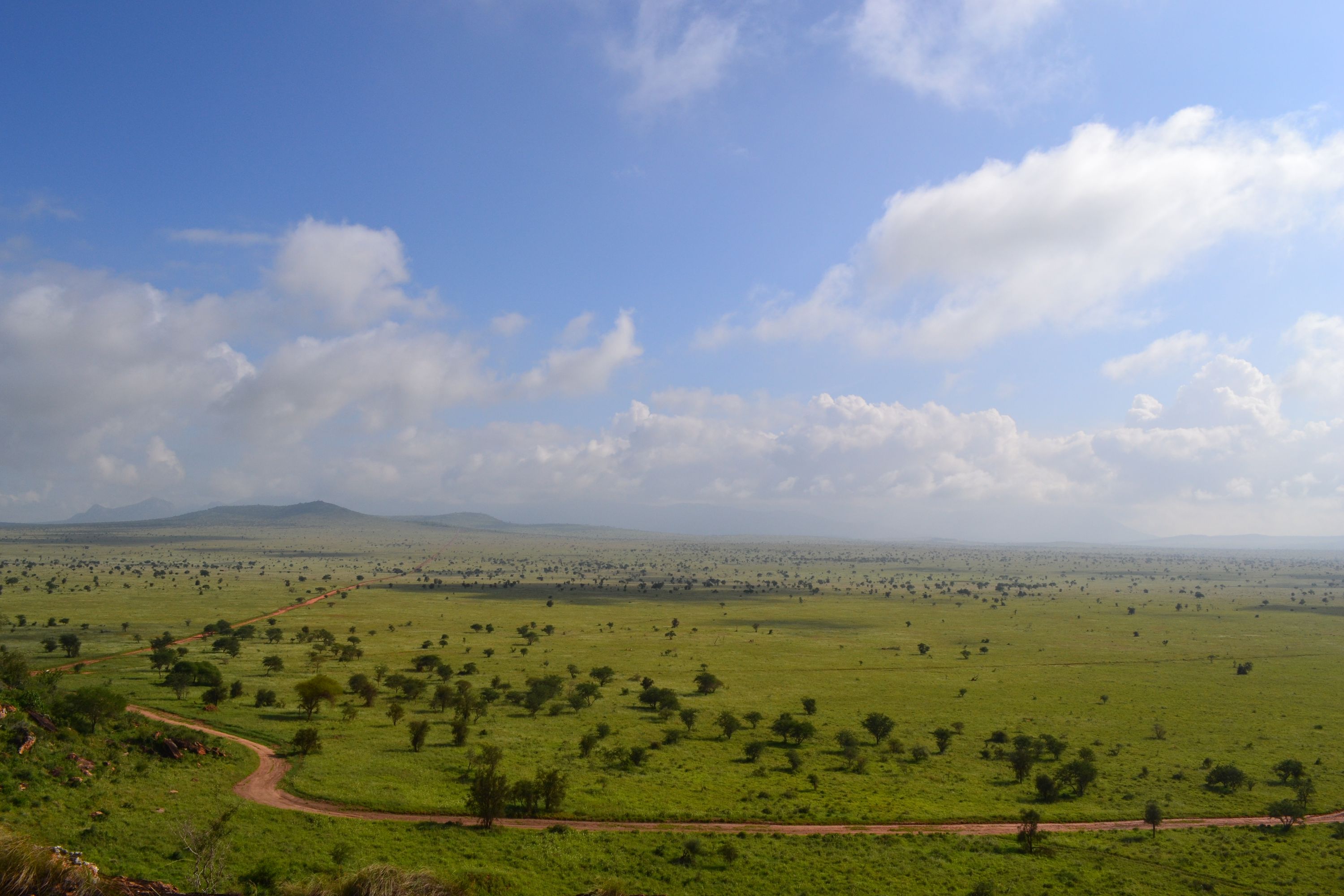Settings with Strata: Building a Fantasy Campaign Setting
I don’t have a fantasy world.
You know, a world — a setting that’s persistent across multiple adventures and campaigns. The kind of place with a unique tone and feel, different from what you get from stock D&D Euro-fantasyland.
I don’t need to have a world, I know. “There are goblins in that cave, and you’re the local tough guys” works fine. I’ve run that before.
But man, I’d really love to have a world with its own history and culture. A place that feels alive. But that’s such a daunting task! Where do I start? How do I get the most bang for my buck, in terms of creating gameable content in as little time as possible?
One of my favorite RPG blogs is Gundobad Games, written by an ancient/medieval historian. One of my favorite posts of Gundobad’s is Settings with Strata: A Quick-Design Method for Historically Coherent Campaign Settings. The advice is pretty simple — come up with a broad overview of your setting’s history before plopping all the adventure locations onto your map — but its value is immediately obvious. It imbues every landmark with in-setting historical context, and serves as a jumping-off point for the game master to flesh places out as the player characters visit them. It’s really solid advice.
So I’m doing a little worldbuilding exercise — follow the steps to making a campaign setting in Settings with Strata, in hopes of creating a little sandbox filled to the brim with factional conflict for players to get enmeshed in.
The steps are as follows:
- In just a few sentences, articulate a basic main concept for your setting.
- Get or sketch a regional map that fits with that concept.
- Next, write a very brief summary of your setting’s history; in particular, write a 1-3 sentence description of 3 or 4 eras/periods leading up to the present.
- Now, for each of those 3-4 periods, and moving in order from the past to the present (this is important), mark on your map approximately 3-5 locations that were most significant for the history of that period. You can even push it about 7 locations if you want, but don’t think of this as a comprehensive map of all features from that period; just identify the main places of most interest. They can be new sites just built in this era, or there may be continuity of some important sites across periods - but they should make coherent sense in the developing story of your setting. As you do all this, take brief notes narrating the history as you add locations to the map.
Step One: Come up with an Overall Concept
The borderland province of a resplendent yet disunited empire is under threat. Tribes of “barbarians” from beyond the frontier have recently united into a confederation led by a charismatic military leader. This leader brings to bear not only a wholesale reorganization of the “barbarian” social order, but a new religion and a zeal to spread the faith further afield.
Step Two: Get a Regional Map
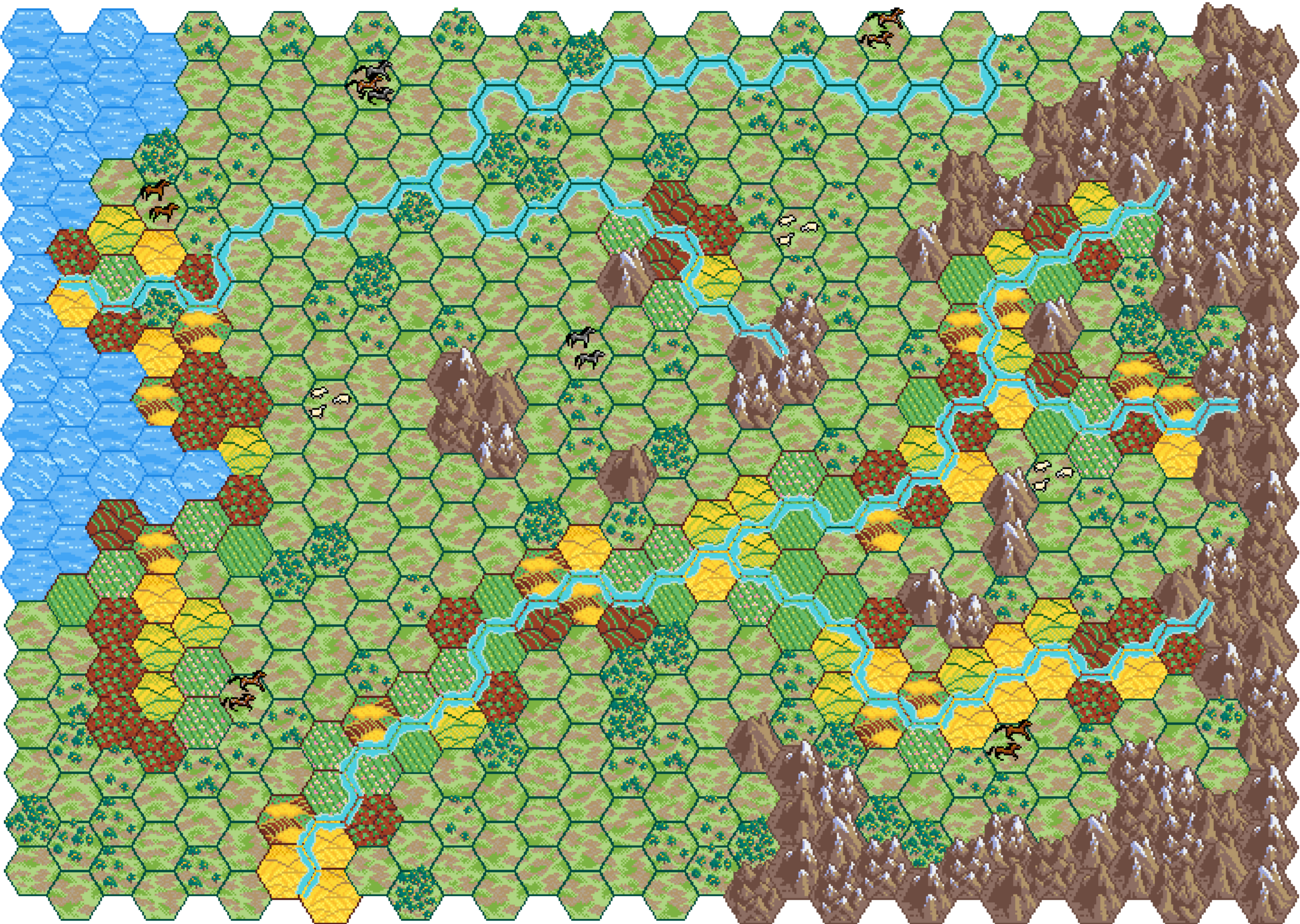
Honestly, this was the hardest part. I’m still not totally satisfied with the way I’ve designed the map, but it’ll do for now. I’m using Hex Kit with Zeshio’s pixel hex tilesets. I recommend both, they’re great!
I imagine this to be a region of mostly grassland — a transition between desert and steppe to the north, and humid forestland to the south. To the west is a large freshwater lake, and to the east is an imposing mountain range.
Step Three: Very Brief Outline of the Setting’s History in 3-4 Periods
Period 1: The imperial army expands into this region from the south, upending an indigenous monarchy. The imperial conquerors appoint a noble family to rule as dukes from a central fortress-city. As trade flourishes, the region grows in population and wealth, while the remnants of the old monarchy are kept divided and pacified.
Period 2: The empire enters a period of decline and fragmentation, during which a succession crisis tips into civil war. When the dukes of this region back a losing claimant, they’re deposed and replaced by a house more loyal to the new regime. Meanwhile beyond the frontier, a charismatic “barbarian” chieftain unites the horse-tribes into a powerful confederation.
Period 3: The new regime’s shaky peace lasts for only a short time before civil war breaks out again. Peasant rebellion and indigenous revolt threaten imperial authority, while rival dynasties assert competing claims to the ducal throne. From the north, the steppe confederation prepares for a campaign of conquest.
Period 4/Present Day: Decades of civil war have led to faltering trade, widespread famine, and vicious sectarian conflict. The indigenous population is in revolt to restore the pre-imperial monarchy, while a new power in the north threatens to devour the whole region.
Step Four: Add 3-7 Locations to the Map for Each Historical Period
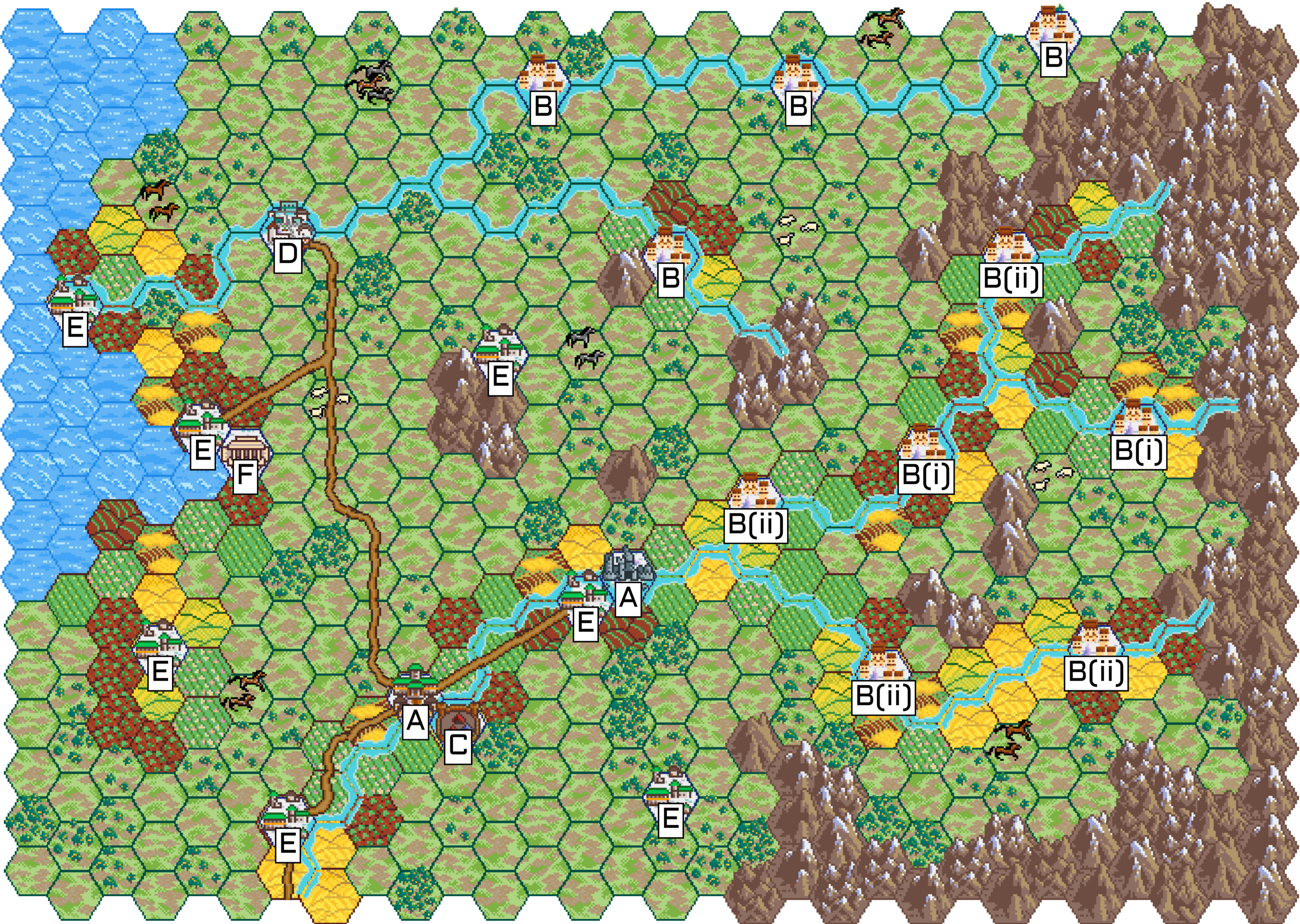
Period 1
The glory days of the empire are nearing their end. Her Illustrious Majesty, the last great empress of her dynasty, has one thousand husbands and her wealth is legend. Under her watch, the empire has expanded north to Kiyaye, where tropical grasslands press against steppe and desert.
A. An ancient city on the southern river serves as capital of a thriving regional state (let’s call this culture the Kipya). The imperial invasion is swift and brutal, slaughtering the overmatched defenders and razing their city to ashes. Further south along the river, a new city is built in imperial style. There, a noble house is appointed to rule Duchy Kiyaye, overseeing a profitable trade in textiles, dyes, horses, salt, and gold.
B. In exchange for submission to imperial authority and service in its armies, the remaining Kipya clans in the north and east are allowed to retain their ancestral lands. These princelings wage intermittent warfare with each other, even as they pledge fealty to the imperial duchess.
B(i). A man named Iyin, soldier in the imperial army and heir to a Kipya clan, returns home after a rival princeling murders his father. Vowing revenge, he demands that the duchess intervene to hand over the princeling. When she refuses, he goes to war. In a rapid campaign, Iyin defeats his rival in battle, executes him, and subsumes his territory.
B(ii). With Iyin’s power rising, other clans band together to cut him down to size — with tacit support from the imperial dynasty. Facing impossible odds, Iyin and his supporters flee north into the steppe. The imperial administration allows this crossing, happy to be rid of a potential threat.
C. A military canton outside the capital is home to an insular society of warriors bound in service to the ducal lineage. They possess a reputation for terrifying martial prowess and sharp-witted poetry.
D. The imperial duchesses maintain a fortified caravanserai at the main bridge across the northern river. Here, imperial officers collect dues on trade flowing south.
E. In the south and west, imperial towns are established over old Kipya settlements, and a road is built connecting the capital with the northern caravanserai.
F. The duchess, seeing herself as a supporter of sorcerous institutions, provides land and funding to found a monastic community in southwestern Kiyaye. The monastics here belong to an innovative sect, adopting ideas from various different traditions.
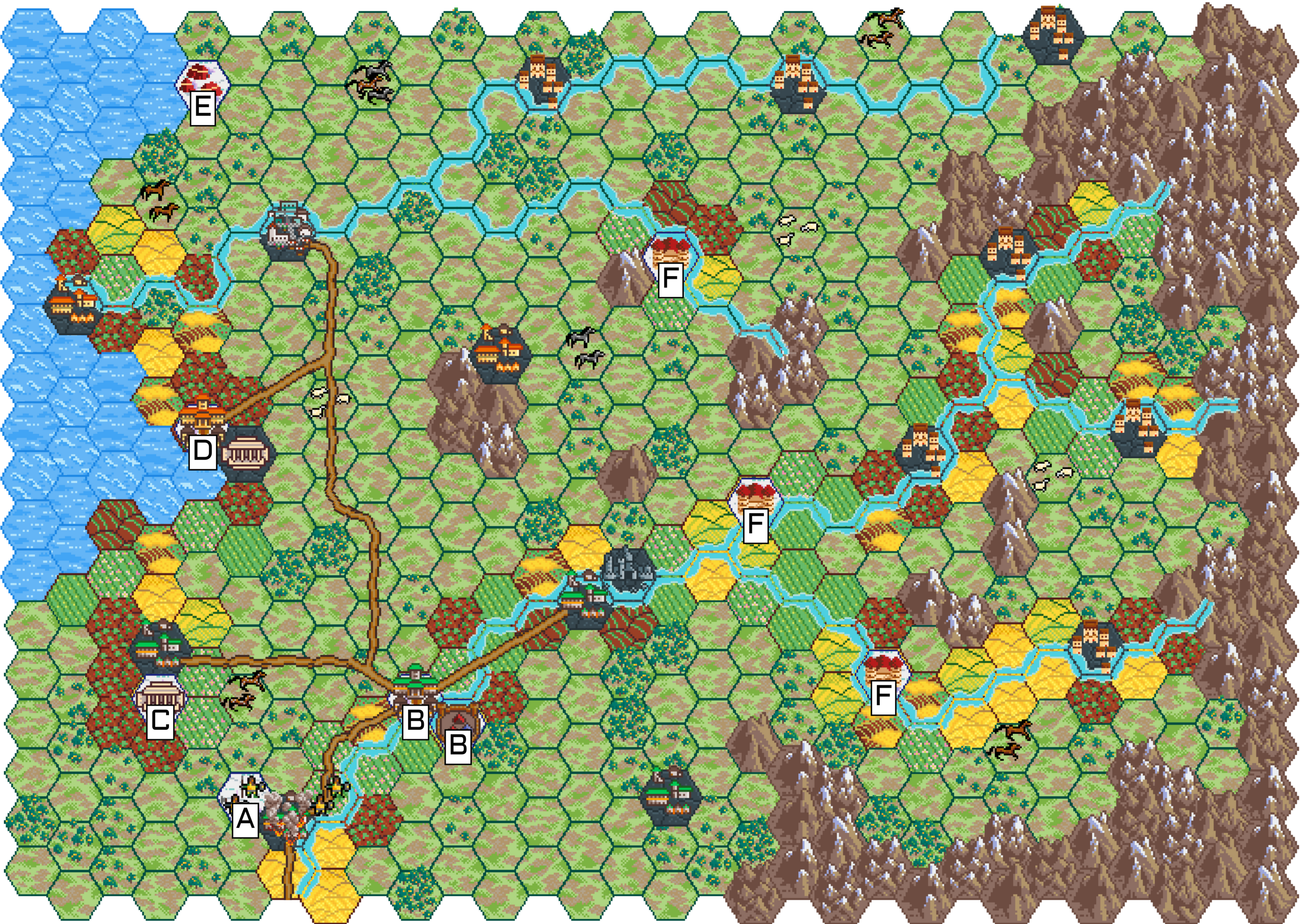
Period 2
Her Majesty lies dead, replaced by a run of corrupt and neglectful successors. Imperial splendor buckles under the strain of ceaseless conflict and courtly intrigue. When a clique of palace viziers depose the sitting child-empress, those tensions erupt into civil war. The Kiyaye duchesses throw their weight behind one of the leading claimants, but her assassination exposes them to vicious retribution.
A. A powerful general leads a campaign into Kiyaye to conquer the province for his wife, a claimant to the imperial throne. He meets the duchess’ forces — led by her eldest husband — outside the southernmost town. After a furious battle, the conquering general emerges victorious, slaying the duchess’ husband and opening the road to the provincial capital.
B. After a lengthy siege, the general’s army seizes the city and executes the sitting duchess. In her place, he appoints a new house to govern Duchy Kiyaye, and insists on leaving a garrison in the old warrior society’s canton.
C. The new regime brings with it a different, more conservative sect of sorcery that rejects what it sees as foreign heterodoxy from the existing monastics. The new dynasty sponsors the construction of a separate monastery, closer to the capital, which adheres to this traditionalist interpretation. A road is built to facilitate travel to this monastery.
D. The remaining members of the old dynasty flee northwest, building a fortress not far from the monastery they sponsored. The two factions become allies, forming a semi-independent power base in opposition to the new regime. Towns to the north tend to align with the old dynasty, while towns to the south ally with the new.
E. The warrior society is spared from annihilation, but faces exile into the northern steppes. There they meet Iyin and his followers, join forces, and adapt quickly to being a nation on horseback. With Iyin at their head, they absorb tribe after tribe into a growing empire. Uniting them is a mix of local customs with several foreign traditions, rapidly maturing into a potent religious force. The confederation sends a war party to set up camp on the lakeshore, scouting out imperial defenses.
F. With imperial rule degrading in the region, Kipya princelings in the east declare their independence. They build three fortified strongholds in their villages in the hill country and launch raids and attacks to the west.
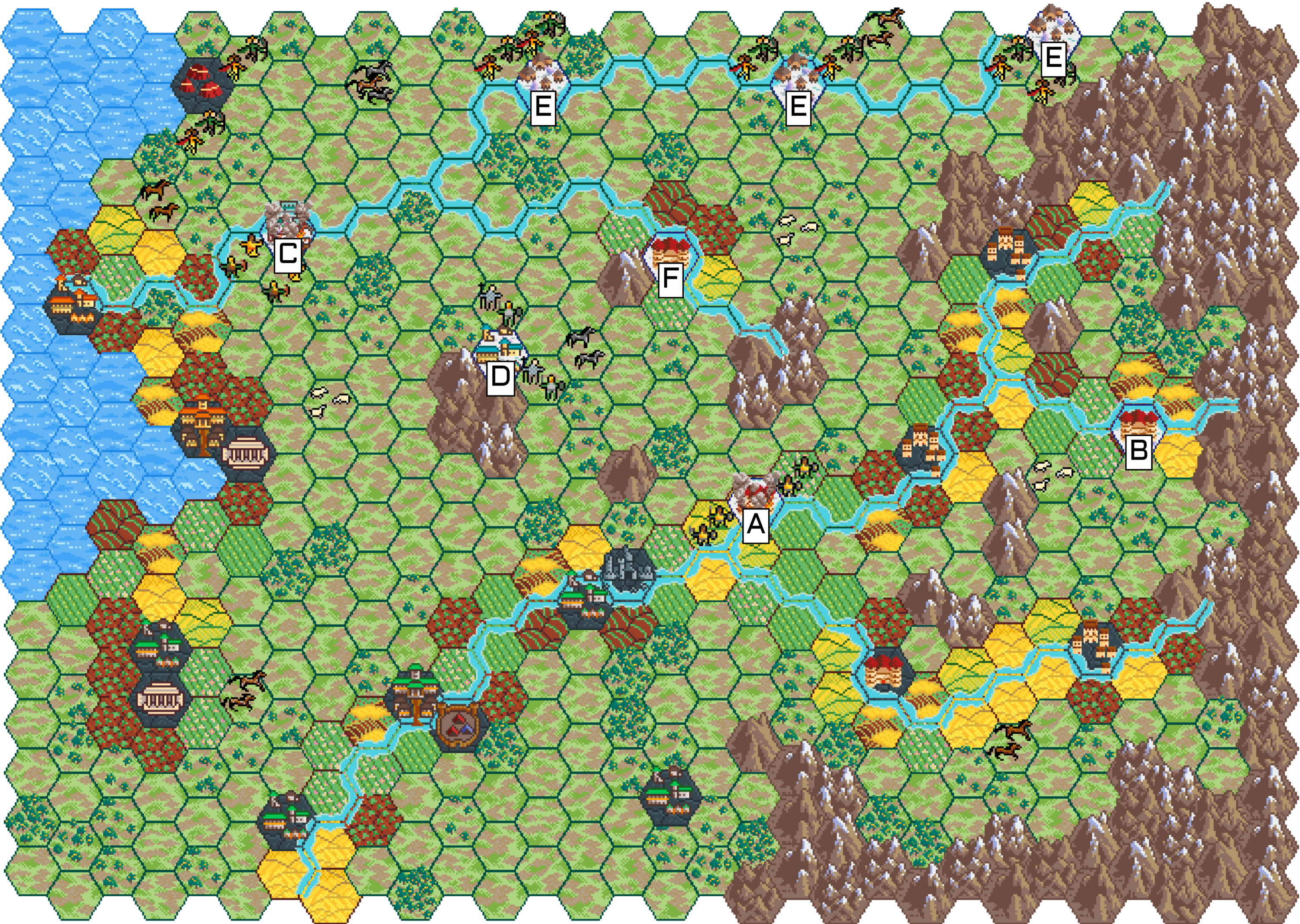
Period 3
A. The new empress’ ascension to the throne leads to only a few short years of peace before her death plunges the empire back into civil war. Decades of imperial mismanagement, internal conflict, and foreign incursion take their toll on Kiyaye and the broader empire. Agricultural yields decline, famine takes hold, and epidemics spread. In the midst of this chaos, a new power arrives from the north.
B. The reigning duchess wages a violent campaign to pacify the eastern Kipya princelings. Her forces seize one of their strongholds, tearing it down as they advance.
C. The battered-but-resistant eastern Kipya fall under the sway of a singular prince, who declares the restoration of the pre-imperial monarchy. He establishes his capital in the eastern highlands, and begins reorganizing the various petty warbands into a centralized army. The steppe confederation grows quickly, driving its enemies further and further afield. One tribe presses against the imperial border, offering themselves as vassals to the sitting duchess. When they’re refused, they ford the river in desperation and sack the fortified caravanserai. With few options, the sitting duchess relents and allows the tribe to resettle across the river.
D. In response to onerous taxes levied at a moment of particular want, peasants across central Kiyaye take up arms against the local nobility. This force snowballs into a massive army, seizing a fortified town in west-central Kiyaye. Ducal forces, spread thin fighting in the east and north, are unable to effectively counter this new threat. The peasant rebels’ leader has a sort of “robin hood” reputation, famed for showing compassion to the poor and only hurting government officials.
E. Iyin leads his forces against the Kipya towns along the northern river, bringing them under his confederation’s rule. He then issues a document listing his grievances with imperial rule — including the murder of his father, the support of the Kipya coalition against him, and the exile of his clan into the steppe. He prepares his armies to cross the river and fall upon the disunited province of Kiyaye.
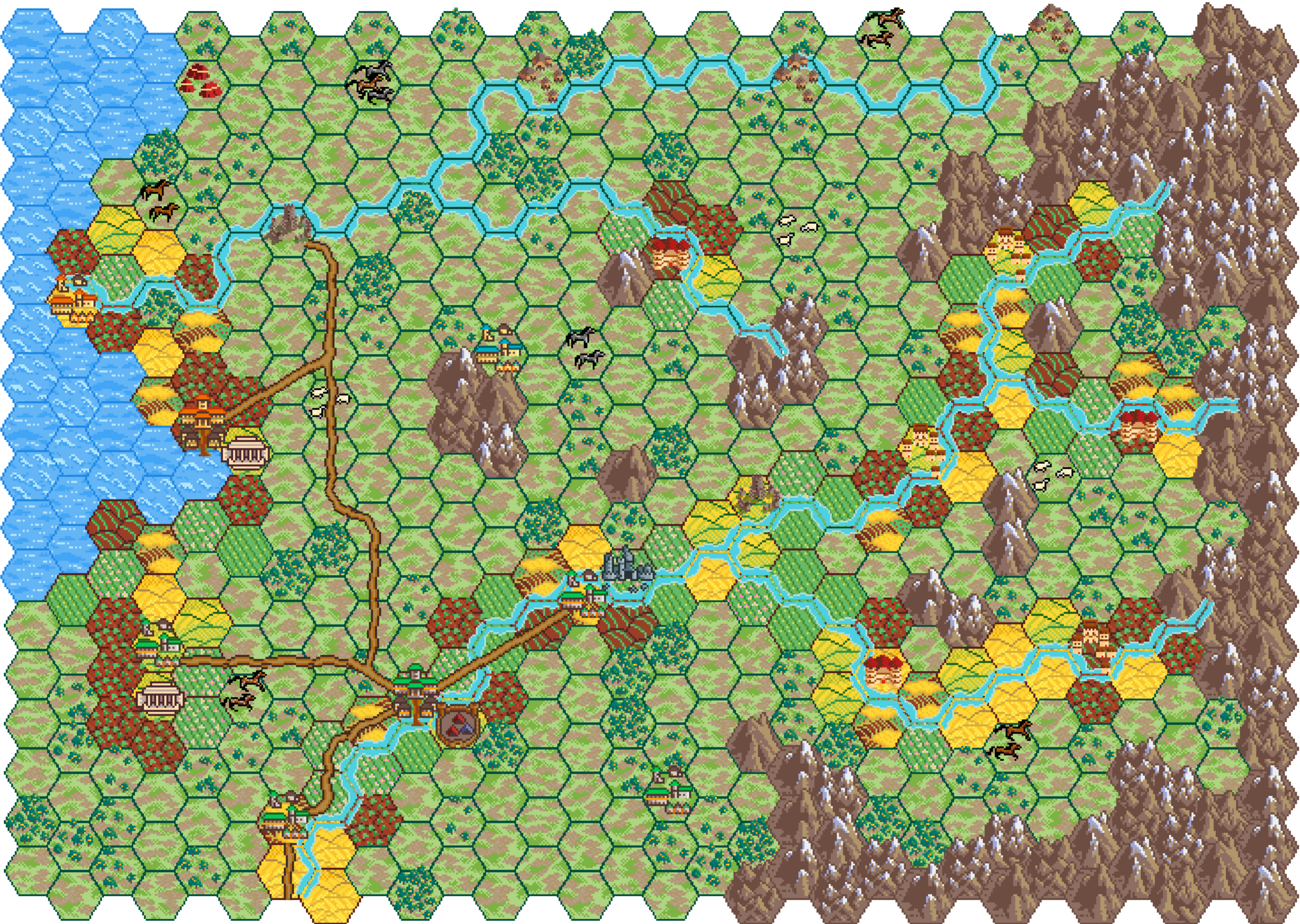
Today
Kiyaye is a region at war. The Kipya tenuously stand together in their struggle against imperial domination, but who knows how long their unity will last? The ducal administration is split between two families with competing claims, while a peasant revolt rocks the countryside. All the while, the threat to the north grows increasingly prevalent. Ruins of old fortresses and pillaged towns dot the landscape, and warbands of various factions prowl the countryside.
Debriefing
So I think it’s fair to say that I’ve taken a lot of inspiration from the basic plot structure of Fallout: New Vegas. There’s a conquering “tribal” society led by a charismatic military reformer butting up against a more established but deeply flawed “civilized” political order. The locals here are caught in the middle, and it’s the players’ job to make decisions that’ll decide the fate of the whole region.
But I’ve made some changes, too. For one, this is a firmly pre-modern fantasy setting, so firearms and electricity and such are out the window, while magic is in. Instead of a bunch of fascists cosplaying as Roman legionnaires, I have a steppe confederation that adheres to a strange new faith. Instead of a corrupt, overextended liberal democracy, I have an unstable feudal monarchy beset by civil war.
There are plenty of places for player characters to explore, from the imperial city to the two monasteries to the eastern Kipya strongholds. Say the players want to go check out that ruined caravanserai up north? Great: it was founded as an imperial trading post, but was since sacked by a nomadic nation fleeing Iyin and his confederation. Those nomads will probably still be around, and the PCs will have to contend with them. But the old ducal lineage is also strong in this area, and Iyin surely has raiding parties scouring for loot. This hex map has a sort of potential energy that I really like in RPG settings — factional conflict that could pull the PCs in all sorts of different directions, with hard choices and opportunities for fame and fortune.
The next step, now that I have the rough outline of this region’s history, is to start putting names to the various people and factions I’ve described above, and coming up with more details about them. What do the two sorcerers’ monasteries disagree on, exactly? What’s this new religion from the north? What are the contours of this empire-wide civil war?
